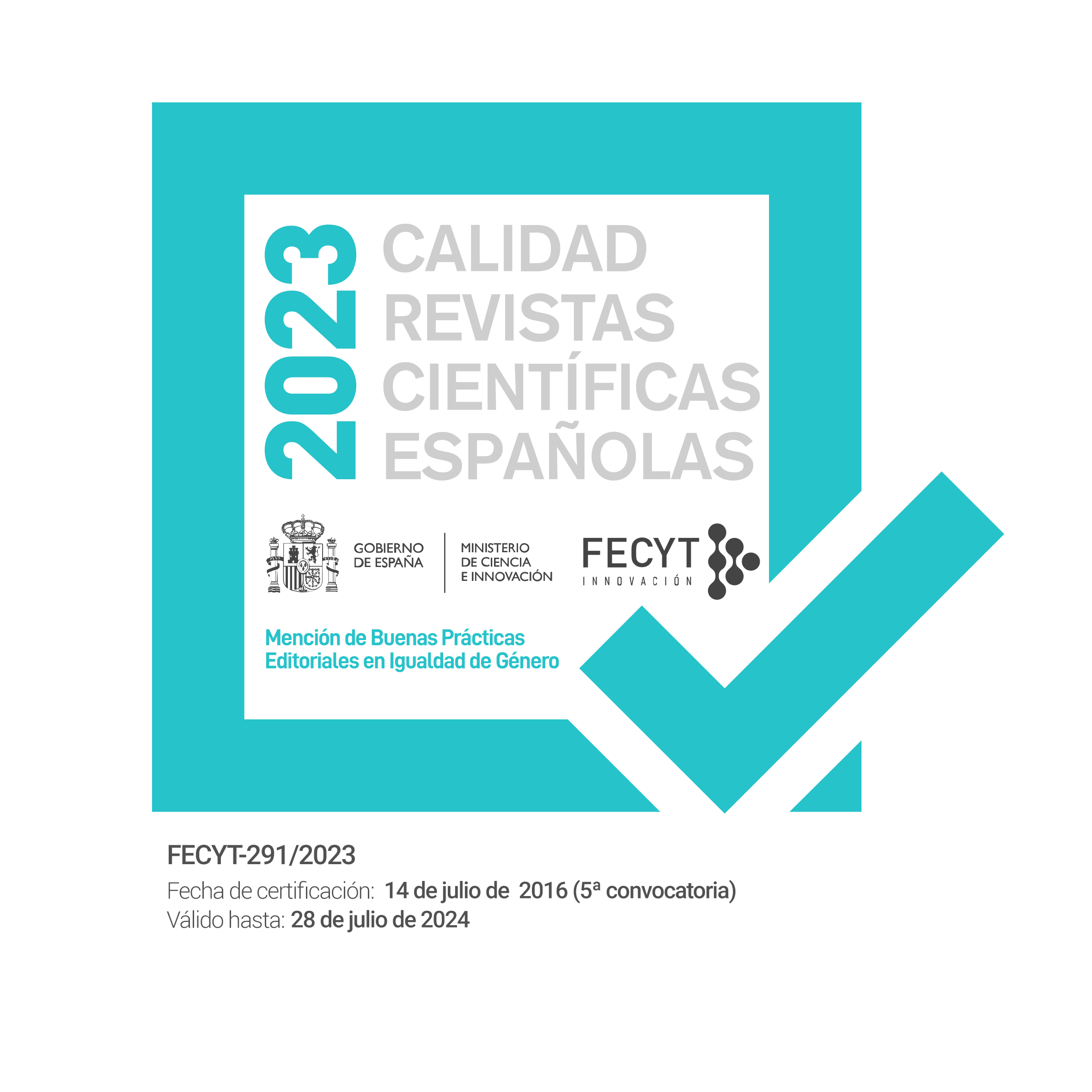Influência da tecnologia interativa síncrona e da adaptação metodológica sobre a intenção de continuidade de uso da educação a distância/ Influence of interactive synchronous technology and methodological adaptation of the intention of continued use ...
DOI:
https://doi.org/10.17398/1695-288X.14.3.49Palavras-chave:
Educação a Distância, Tecnologias de Informação, Metodologia, Experimento, Aprendizagem /Resumo
O objetivo deste estudo é avaliar a influência das tecnologias interativas síncronas e da adaptação metodológica sobre a intenção de continuidade de uso da Educação a Distância. Em sua primeira fase, este experimento contou com a participação de 2.376 pessoas das cinco regiões do Brasil. Para o tratamento dos dados, a técnica PLS-PM (Partial Least Square – Path Modeling) foi utilizada com uma amostra final de 243 indivíduos. Os resultados indicam que a adaptação do aluno à metodologia é um importante preditor de sua satisfação, percepção de utilidade e de sua intenção de voltar a estudar pela internet no futuro, entretanto, não foi possível confirmar a influência das tecnologias interativas síncronas sobre a intenção de continuidade de uso da EaD, revelando que a tecnologia de informação, embora importante, tem papel de suporte aos processos educacionais, e o que orientará a decisão do aluno de voltar a estudar via EaD são os aspectos metodológicos aplicados às diversas mídias disponíveis, além de outros possíveis fatores externos à instituição não contemplados neste estudo. Entender os fatores que levam a continuidade dos estudos em EaD pode ajudar na redução da evasão ao promover adaptações metodológicas ao perfil do estudante, melhorando a relação de ensino-aprendizagem e o alcance dos objetivos educacionais.
Abstract
Referências
ABED (2013). Censo EAD.BR: Relatório Analítico da Aprendizagem a Distância no Brasil 2012. Curitiba: Ibpex.
Ajzen, I. (1991). The Theory of Planned Behavior. Organizational Behavior and Human Decision Processes, 50(1), 179–211.
Almeida, O. C. S. (2007). Evasão em Cursos a Distância: validação de instrumento, fatores influenciadores e cronologia da desistência. (Dissertação de Mestrado, Universidade de Brasília). Recuperado a partir de http://bdtd.bce.unb.br/tedesimplificado/tde_arquivos/65/TDE-2007-10-26T170707Z-1970/Publico/Dissert_Onilia Cristina.pdf
Anderson, E. W., & Sullivan, M. W. (1993). The Antecedents and Consequences of Customer Satisfaction for Firms. Marketing Science, 2(2), 125–143.
Bhattacherjee, A. (2001). Understanding information systems continuance: An expectation-confirmation model. Management Information Systems Quarterly, 25(3), 351–370.
Blanchard, E., Razaki, R., & Frasson, C. (2005). Cross-Cultural Adaptation of e-Learning Contents: a Methodology. In World Conference on E-Learning in Corporate, Government, Healthcare, and Higher Education.
Brasil - Ministério da Educação. (2014). Instituições Credenciadas para Graduação em EaD - Brasil. Recuperado a partir de http://siead.mec.gov.br/novosiead/web/emec/#tab=0.
Burgos, D., Tattersall, C., & Koper, R. (2007). How to represent adaptation in e-learning with IMS learning design. Interactive Learning Environments, 15(2), 161–170.
Clark, R. C., & Kwinn, A. (2007). The New Virtual Classroom: Evidence-based Guidelines for Synchronous e-Learning. San Francisco, CA: Pfeiffer.
Chang, C. -C. (2013). Exploring the determinants of e-learning systems continuance intention in academic libraries. Library Management, 34(1), 40–55.
Chin, W. W. (1998). The partial least square approach for structural equation modelin. In: Marcoulides, G.A. (Ed), Modern Methods For Business Research (pp.295–236) London: Lawrence Erlbaum Associates.
Cohen, J. (1988). Statistical Power Analysis for the Behavioral Sciences (2a. ed). New York: Psychology Press.
Dabolkar, P. A., Shepard, C. D., & Thorpe, D. I. (2000). A Comprehensive Framework for Service Quality: An Investigation of Critical Conceptual and Measurement Issues Through a Longitudinal Study. Journal of Retailing, 76(2), 139–173.
Davis, F. D., Bagozzi, R. P., & Warshaw, P. R. (1989). User Acceptance of Computer Technology: A Comparison of Two Theoretical Models. Management Science, 35(8), 982–1003.
Davis, F. D. (1989). Perceived usefulness, perceived ease of use and user acepptance of information technology. Mis Quarterly, 13(3), 319–340.
Delone, W. H., & McLean, E. R. (2003). The DeLone and McLean Model of Information Systems Success: A Ten-Year Update. Journal of Management Information Systems, 19(4), 9-30.
Delone, W. H., & McLean, E. R. (1992). Information systems success: The quest for the dependent variable. Information Systems Research, 3(1), 60–86.
Faul, F. (2009). Statistical power analyses using G*Power 3.1: Tests for correlation and regression analyses. Behavior Research Methods, 41(4), 1149–1160.
Fishbein, M., & Ajzen, I. (1979). Belief, attitude, intention, and behavior: an introduction to theory and research. Boston (MA): Addison-Wesley.
Franzoni, A. L. (2008). Student Learning Styles Adaptation Method Based on Teaching Strategies and Electronic Media. In Advanced Learning Technologies. Eighth IEEE International Conference (778 – 782). Cantabria.
Freitas, V. (2002). AdaptWeb: An Adaptive Web-based Courseware. Proceedings of the International Conference on Information and Communication Technologies in Education (ICTE). (20-23). Badajoz, Spain.
Gasparini, I. (2011). Modelo do usuário sensível ao contexto cultural em um sistema e-learning adaptativo. Informática na educação: teoria & prática, 14(1), 123–135.
Hair, J. F., Gabriel, M. L. D. S., & Patel, V. K. (2014). Modelagem de Equações Estruturais baseada em convariância (CB-SEM) com o AMOS: Orientações sobre a sua aplicação como uma ferramenta de pesquisa de Marketing. Revista Brasileira de Marketing, 13(2), 43–53.
Heiden, H., Verhagen, T., & Creemers, M. (2003). Understanding online purchase intentions: contributions from technology and trust perspectives. European Journal of Information Systems, Basingstoke, 12(1), 41–48.
Ho, C. (2010). Continuance Intention of E-Learning Platform: Toward an Integrated Model. International Journal of Electronic Business Management, 8(3), 206–215.
Holsapple, C. W., & Lee-Post, A. (2006). Defining, Assessing, and Promoting E-Learning Success: An Information Systems Perspective. Decision Sciences Journal of Innovative Education, 4(1), 67-85.
Hrastinski, S. (2008). Asynchronous and Synchronous E-Learning. Educause Quarterly, 4(1), 51–55.
Hyder, K. (2007). The eLearning Guild’s Handbook on Synchronous e-Learning. Santa Rosa, CA: The eLearning Guild.
Kelly, P. (2011). Web 2.0-based e-learning: applying social informatics for tertiary teaching. Open Learning, 26(3), 280–283.
Kimura, M. H. (2012). Aumentando a Flexibilidade de um Sistema e-learning Adaptativo através da Abordagem Responsive Webdesign. IEEE-RITA, 7(4), 203–210.
Krüll, J. L., & Mackinnon, D. P. (1999). Multilevel mediation modeling in group-based intervention studies. Evaluation Review, Beverly Hills, 23(4), 418–444.
Liaw, S. -S. (2008). Investigating students’ perceived satisfaction, behavioral intention, and effectiveness of e-learning: A case study of the Blackboard system. Computers & Education, 51(2), 864–873.
Lin, K. -M., Chen, N. -S., & Fang, K. (2011). Understanding e-learning continuance intention: a negative critical incidents perspective. Behaviour & Information Technology, 30(1), 77–89.
Lin, W. -S., & Wang, C. -H. (2012). Antecedences to continued intentions of adopting e-learning system in blended learning instruction: A contingency framework based on models of information system success and task-technology fit. Computers & Education, 58(1), 88–99.
Oliver, R. L. (1980). A Cognitive Model for the Antecedents and Consequences of Satisfaction. Journal of Marketing Research, 17(1), 460–469.
Patterson, P. G., Johnson, L. W., & Spreng, R. A. (1997). Modeling the Determinants of Customer Satisfaction for Business-to-Business Profesional Services. Journal of the Academy of Marketing Science, 25(1), 4–17.
Roca, J. C., Chiu, C. -M., & Martínez, F. J. (2006). Understanding e-learning continuance intention: An extension of the Technology Acceptance Model. International Journal of Human-Computer Studies, 64(8), 683–696.
Roca, J. C., & Gagné, M. (2008). Understanding e-learning continuance intention in the workplace: A self-determination theory perspective. Computers in Human Behavior, 24(4), 1585–1604.
Tha, K. K. O., Poo, C. D., & Yu, X. (2009). Understanding Continuance Intention in E-learning Community. In Americas Conference on Information Systems. San Francisco, California.
Tse, D. K., & Wilton, P. C. (1988). Models of Consumer Satisfaction: An Extension. Journal of Marketing Research, 25(1), 204–212.
Downloads
Publicado
Edição
Secção
Licença
Los autores/as que publiquen en esta revista aceptan las siguientes condiciones:
1. Los autores/as conservan los derechos de autor y ceden a la revista el derecho de la primera publicación, con el trabajo registrado con la licencia Creative Commons Reconocimiento-NoComercial-SinObraDerivada 4.0 International (CC BY-NC-ND), que permite a terceros utilizar lo publicado siempre que mencionen la autoría del trabajo y a la primera publicación en esta revista.
2. Los autores/as pueden realizar otros acuerdos contractuales independientes y adicionales para la distribución no exclusiva de la versión del artículo publicado en esta revista (p. ej., incluirlo en un repositorio institucional o publicarlo en un libro) siempre que indiquen claramente que el trabajo se publicó por primera vez en esta revista.
3. Se permite y recomienda a los autores/as a publicar su trabajo en Internet (por ejemplo en páginas institucionales o personales) antes y durante el proceso de revisión y publicación, ya que puede conducir a intercambios productivos y a una mayor y más rápida difusión del trabajo publicado (vea The Effect of Open Access).









